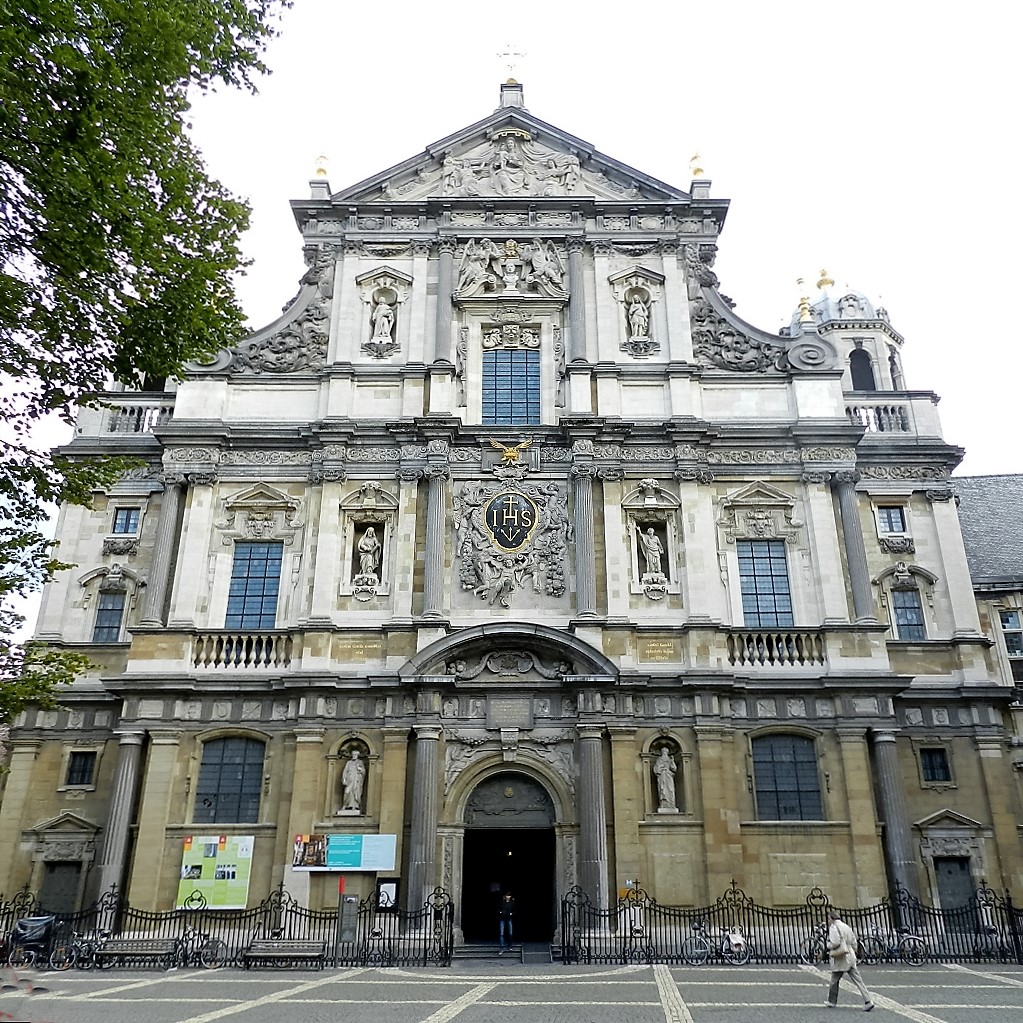The Antwerp jesuit church, a revelation.
The ceiling paintings
The Redemptive history (Peter Paul Rubens)
In churches of the Southern Low Countries you expect seeing Baroque paintings frontally on altars and walls, but the Antwerp Jesuits involved all available space in their artistic policy. For Peter Paul Rubens, the Society’s religious zeal was an exquisite opportunity to realize an unequalled series of no less than 39 ceiling paintings. 34 subjects were stated in a provisional list by FatherPriest who is a member of a religious order. Jacobus Tirinus, the Rector of the professed house. He made the contract – worth 7,000 florins – with the Antwerp master on 29th March 1620. Rubens had to make the designs and could have them executed by his workshop, but if necessary he had to correct himself. All the paintings had to be delivered before the consecrationIn the Roman Catholic Church, the moment when, during the Eucharist, the bread and wine are transformed into the body and blood of Jesus, the so-called transubstantiation, by the pronouncement of the sacramental words. of the church.
Once the coloured designs had been approved of by the Jesuits, they served as models for those executing them. The 21-year-old Anthony van Dyck was mentioned as the main co-operator and he got the lead in executing Rubens’ drawings at full-size. But before the end of the year he had already left for King James I of England. Of the larger sketches in oils 22 have been preserved and of the preparatory studies in grisaille 17 are still known, scattered across art collections all over the world. After the 1718 fatal fire, in which all 39 canvases went up in flames, these sketches have been the principal iconographical source for the knowledge of the original cycle of ceiling paintings. Other sources are the drawings that Jacob De Wit (1712) and Christian Benjamin Müller (just in 1718!) made on the spot and that were published as etchings.
37 drawings by Christian Benjamin Müller are owned by “Antwerpen Prentenkabinet”. Via this link you access the search page of the Prentenkabinet. If you fill in “müller christian benjamin” in the search field en choose to access the printroom, you can see all of them online.
The Jesuits used the ceilings of the long upper gallery for the linear course of history, especially Christian redemptive history. The commissioners hoped to convince the visitors of how God wants to free humanity from evil and death. Each bayThe space between two supports (wall or pillars) in the longitudinal direction of the nave, transept, choir, or aisle. of the horizontal ceiling showed an important event. As an introduction, there was the mystery of evil, with which each man is confronted willy-nilly. The first design, The expulsion of Adam and Eve from the Garden of Eden, was replaced by The fall of the rebel angels. As a response to this Gods goodness breaks through vigorously in His son. The most important scenes of Jesus’ life were still represented following the medieval typology, i.e. preceded by a parallel scene from the Old TestamentPart of the Bible with texts from before the birth of Jesus.. The cycle ended hopefully at the fulfilment of God’s dream: Mary, always prepared to react positively to God’s invitation, is the first human to be raised into eternal happiness, which is symbolized by her being crowned in Heaven. Jesus’ mission continues in the Church, which was represented by a series of saints on the ceilings of the aisles below, with an equal number of men and women.
The ceiling of the western bay, at the main entrance, offered the Jesuits the opportunity to express their loyalty to the supreme worldly leaders. For the uneven number of coffers, the Jesuits found a diplomatic solution. The archduke got the central place of honour, which he deserved, with his (male) patron SaintThis is a title that the Church bestows on a deceased person who has lived a particularly righteous and faithful life. In the Roman Catholic and Orthodox Church, saints may be venerated (not worshipped). Several saints are also martyrs. Albert. He was flanked by two (female) patron saints of his wife: Elisabeth (‘Isabella’ in Spanish) and Clara
Admiration leads to copying and inspiration. The admiration Sir George Chaworth, ambassador of King James I, felt for the ceiling paintings would lead to Rubens’ commission for the ceiling of Banqueting House at the reconstruction of Whitehall in London.



